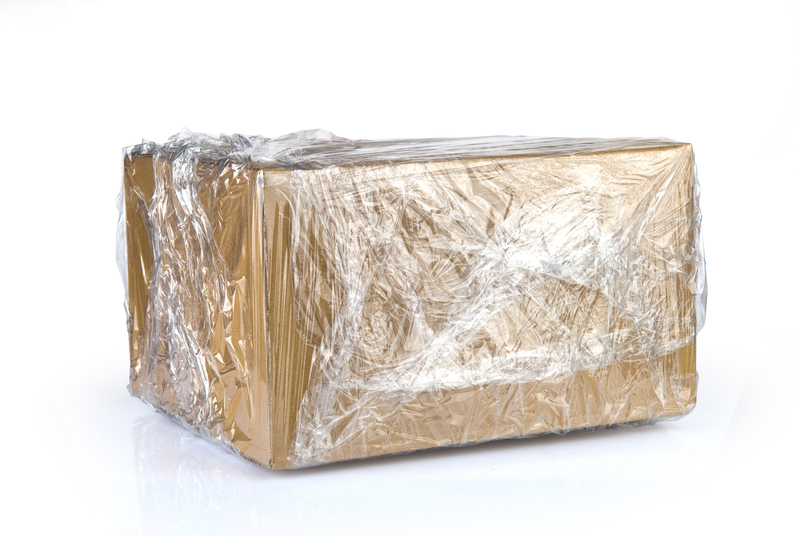Step-by-Step Guide to Moving Your Bed and Mattress
Posted on 09/06/2025
Step-by-Step Guide to Moving Your Bed and Mattress
Relocating to a new home comes with a unique set of challenges, particularly when it comes to moving large, important pieces of furniture like your bed and mattress. Whether you're moving across town or across the country, ensuring your sleeping setup arrives safe and intact is critical. This comprehensive bed and mattress moving guide walks you through every stage of the process, from preparation and disassembly to transportation and reassembly, so you can sleep soundly in your new home.


Why Properly Moving Your Bed and Mattress Matters
Moving a bed and mattress is more than just shifting bulky items--it's about protecting your investment and ensuring your health and comfort in your new space. Improper handling can result in damaged bed frames, torn mattresses, or worse, injury. By following a systematic approach, you guarantee a smooth transition for your bed, your mattress, and yourself.
Table of Contents
- Preparation: Gathering Materials and Planning the Move
- Disassembling Your Bed Frame
- Packing and Protecting Your Mattress
- Transporting Your Bed and Mattress
- Reassembling Your Bed in the New Location
- Expert Tips for a Hassle-Free Move
Preparation: Gathering Materials and Planning the Move
Before you dive into moving your bed and mattress, preparation is key. The more thorough your planning, the easier the move will be. Here's what you'll need and what to consider:
Essential Moving Supplies
- Mattress bag or mattress box: Protects your mattress from dirt, moisture, and damage during the move.
- Bubble wrap or moving blankets: Shields bed frames and headboards against scratches and dings.
- Plastic wrap: Useful for keeping small bed frame pieces together.
- Packing tape: Secures protective materials.
- Tool kit: Includes a wrench, screwdriver, and Allen keys for bed disassembly.
- Labels and plastic bags: Keeps track of screws, bolts, and small parts.
- Moving straps or dollies: Helps you safely transport heavy components.
Measure Your Path
Before moving your bed and mattress, measure doorways, hallways, stairs, and elevators. Compare these measurements to the dimensions of your bed frame and mattress to ensure everything will fit smoothly on moving day. Planning your route ahead of time prevents frustrating bottlenecks and protects both your furniture and your home from damage.
Clean Before You Move
Take this opportunity to clean your bed frame and mattress thoroughly before packing. This ensures you bring only fresh, clean items into your new space, and makes it easier to inspect for damage or wear that might be exacerbated during transport.
Disassembling Your Bed Frame
The next step in the bed and mattress moving process is taking apart your bed frame. Doing so makes it much easier to transport, prevents damage, and reduces the risk of injury.
How to Disassemble Your Bed Step-by-Step
- Remove all bedding: Strip your bed, wash linens if possible, and pack them separately in labeled boxes or bags.
- Take off the mattress: Encase it in a mattress protector or bag as soon as you remove it, and set it aside.
- Detach the headboard and footboard: Locate the fasteners securing these pieces to the bed's main frame. Using your tool kit, carefully unscrew and set aside all bolts and nuts in clearly labeled plastic bags.
- Disassemble side rails and slats: Take note of how the bed is assembled for easier reassembly later. Take photos if necessary as a reference.
- Bundle parts securely: Wrap each piece in moving blankets or bubble wrap, and secure with tape. Attach hardware bags to their corresponding frame pieces for convenience.
If your bed frame is particularly large, bulky, or made from delicate materials, consider enlisting a friend or family member for help. For specialty frames (such as canopy beds or adjustable bases), refer to the manufacturer's manual or website for specific instructions.
Packing and Protecting Your Mattress
Mattresses are an investment and, due to their size and material, are prone to damage during a move. Proper packing is essential for effective mattress moving.
Steps to Pack Your Mattress Safely
- Encase in a Mattress Bag: Slide your mattress into a thick, high-quality mattress bag. These are widely available at home improvement stores and online, and provide robust protection against dust, moisture, and tears.
- Seal Carefully: Tape the ends of the mattress bag to create an airtight seal. Avoid puncturing the bag during handling.
- Move Vertically If Possible: For most mattresses, it's best to keep them vertical (standing on their side)--this makes for easier transport and prevents unnecessary bending or folding. Note: Some specialty mattresses, such as memory foam, should never be folded.
- Use a Mattress Box for Long-Distance Moves: If you're moving between cities or across the country, a sturdy mattress box provides an extra layer of protection--especially if your mattress will be on a truck for an extended period.
What About Box Springs and Foundations?
Box springs should also be covered in plastic or a fitted box spring cover. Treat foundations and frames with similar care, wrapping them tightly to prevent dings or stains.
Pro Tip: If your mattress is over 7-8 years old or already shows signs of sagging and wear, now is an ideal time to consider replacing it. Moving offers the perfect opportunity for a fresh start with a new mattress.
Transporting Your Bed and Mattress
Now that your items are prepped and dismantled, you're ready to load them into your vehicle or a moving truck. Safe transportation is crucial to avoid accidental damage.
Loading the Mattress
- Keep Your Mattress Upright: Always load your mattress standing up along the sidewall of the moving truck. Avoid placing heavy boxes or furniture on top--it can permanently deform your mattress.
- Secure with Straps: Use moving straps or ropes to anchor the mattress in place. This prevents shifting and sliding during transit.
- Use Padding: Add extra moving blankets or pillows on both sides of the mattress to protect against scuffs and impacts.
Loading the Bed Frame and Accessories
- Lay Flat When Possible: Lay longer pieces (rails, headboard, footboard) flat along the floor or the wall of the truck. Place heavier items on the bottom and lighter parts on top.
- Layer for Protection: Insert padding between stacked frame parts to avoid friction and scratches.
- Stow Hardware Carefully: Ensure small hardware bags are secured to their relevant frame parts or stored safely in your essentials box.
If You're Transporting on a Car Roof or Pickup Truck
Due to wind resistance and weather, avoid transporting mattresses long distances on your car roof. If using a pickup truck bed for a short local move, ensure the mattress is tied down securely and protected from rain, debris, or sun exposure with a tarp.
Reassembling Your Bed in the New Location
The final step in moving your bed and mattress is reassembly. With careful preparation, putting it back together should be smooth and straightforward.
Bed Reassembly Made Easy
- Clear and Clean the Area: Before reassembling, clean your new bedroom floor and make sure there's enough space to work.
- Lay Out All Parts: Arrange the headboard, footboard, side rails, slats, and hardware so you have everything at hand.
- Follow Your Reference: Use the photos you took or consult the assembly instructions. Reattach each part in the reverse order you dismantled it.
- Tighten All Fasteners: Ensure all screws and bolts are tightened securely, but don't overtighten. Loose frames may squeak; overtightening can crack the wood or strip the hardware.
- Install the Mattress: Once the frame is sturdy, place your mattress and box spring or foundation on top.
- Add Bedding: Put fresh sheets and blankets on the bed--and enjoy your first night in your new home!
Expert Tips for a Hassle-Free Bed and Mattress Move
- Enlist Help: Moving a mattress and bed frame usually requires at least two people, especially with king or queen-sized beds.
- Use Professional Movers: For long-distance moves or heavy specialty beds, hiring professional movers experienced in bed and mattress moving can save time and prevent injuries.
- Don't Rush: Move slowly and carefully to avoid damage to both the bed and your new or old home's walls and floors.
- Label Everything: Mark hardware bags and frame parts clearly for easy reassembly.
- Prioritize Mattress Care: Never fold, drag, or stack heavy items on your mattress--it can ruin its structure.
- Inspect After the Move: Once in your new home, thoroughly check your mattress and bed frame for any signs of damage during transit.
Conclusion: Sleep Soundly After a Seamless Move
With the strategies outlined in this step-by-step guide to moving your bed and mattress, you can confidently tackle one of the most important parts of your relocation. From bed frame disassembly to mattress protection and safe transportation, every step matters. Remember, preparation makes all the difference--ensure you have the right supplies, measure doorways in advance, and don't hesitate to enlist help right from the start.
By following these thorough and proven bed and mattress moving tips, you'll minimize stress and be ready for restful sleep in your new home from the very first night. Happy moving!
Frequently Asked Questions
- Can I move my mattress by myself? Most mattresses require two people to move safely, especially large or heavy types. Always protect your back by lifting properly and don't hesitate to ask for help.
- Is it OK to fold or bend my mattress when moving? Most traditional innerspring and hybrid mattresses should not be folded, as it can damage the internal structure. Some foam mattresses can be bent briefly, but always check manufacturer instructions.
- Do I need a special bag for my mattress? Yes, a mattress bag is highly recommended--it provides excellent protection against dirt, dust, water, and tears during mattress relocation.
For more moving guides and tips on caring for your furniture and home, explore our related resources below!



